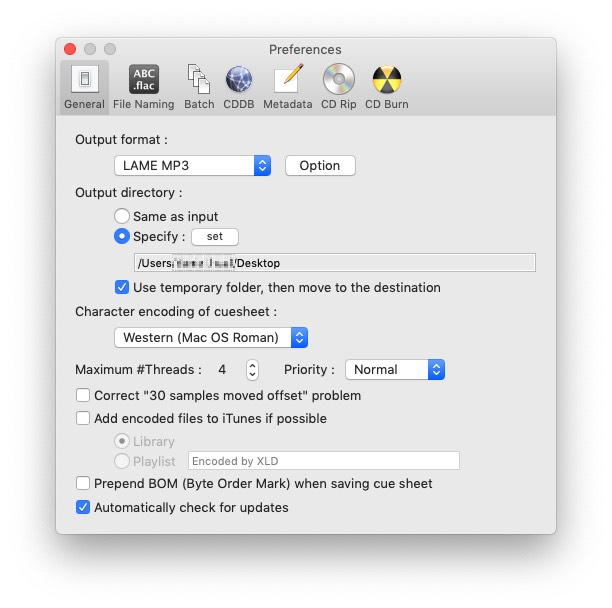

The "Correct 30 samples moved offset problem" should be left unchecked. Everything else should be left unchecked unless you want it for your own personal needs. This will increase the number of simultaneous audio conversions XLD can perform.Ĩ. For example, a Dual Core Mac should be set to use 2 threads. Maximum #Threads - If you have a multi-processor or multi-core Mac, you should change this setting from "1" to however many your system has. Leave the cue sheet character encoding as the default setting.ħ. For a good rip, it should be set to "%n - %t" to have the tracknumber first.Ħ. Next you can set up the custom naming scheme if you wish. Later in the guide you will encounter this option again.ĥ. You'll set that manually before each rip. Don't worry about the Output directory setting. The output directory will tell XLD where your rips and log file should go. And this is how your final settings should more or less look like.Ĥ. Now we are going to configure the General settings tab.

You will need to configure each format separately.ģ. Use the drop-down menu to set the output format to Multiple Formats. To encode V0 you should have it set up like the box shown below. A new box will appear with the options for MP3 encoding.

Use the drop-down menu to set the output format to LAME MP3. Leave the "Allow to embed cue sheet" box unchecked unless you are going to rip to one single file, not multiple tracks. Use the drop-down menu to set the output format to FLAC. You will see the following set of options. Go to XLD -> Preferences to set up the General tab.Ģ. The first thing to do is correctly set up XLD to rip with your Mac.


 0 kommentar(er)
0 kommentar(er)
